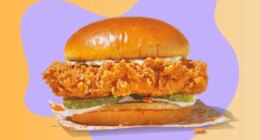In your 20s, you could consume an entire pizza pie after a late night of partying and not gain a single ounce. But in your 40s? Well, if you treated yourself to a meatball sub more than once a week, you’d likely see the number on the scale go right up. Not to mention, achieving a chiseled physique versus a dad bod gets harder.
That’s why it’s so important to keep track of your diet and avoid foods that not only add pounds to your frame, but put you at risk for serious health conditions, like heart disease, high blood pressure, and diabetes.
To help ensure you’re aging in reverse, we put together a list of the worst foods for men over 40. See which foods are less than ideal for men over the age of 40, and be sure to read up on Eating Habits to Lose Abdominal Fat As You Age, According to Dietitians.
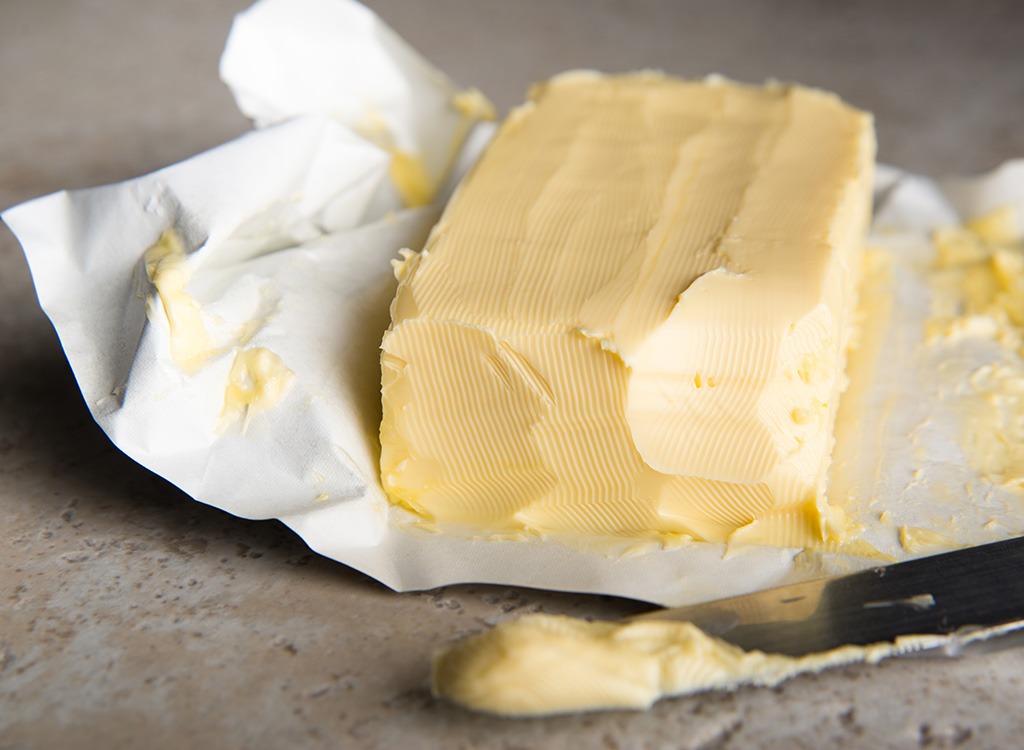

Most margarine tubs contain artery-clogging saturated fats and are loaded with processed oils. As if that isn’t bad enough, many margarine brands use propylene glycol, a synthetic compound, which research has shown to increase cholesterol levels and cause weight gain. For a healthier alternative, swap in grass-fed butter or substitute with healthy oils such as extra-virgin olive oil and coconut oil.
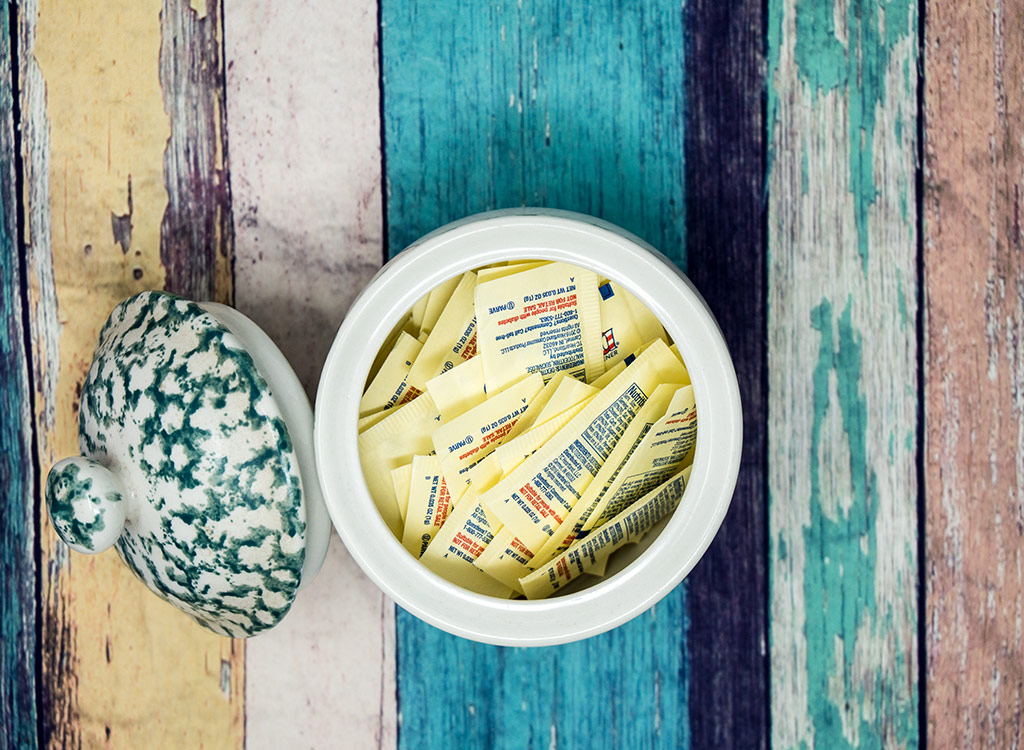

While artificial sweeteners don’t add calories to your diet, they can increase your cravings for more sugar. In fact, research shows that aspartame, sucralose, and stevioside can actually lead to weight gain, diabetes, and other health conditions. If you want to sweeten your baked goods smartly, replace sugar with maple syrup, raw honey, or unsweetened applesauce.
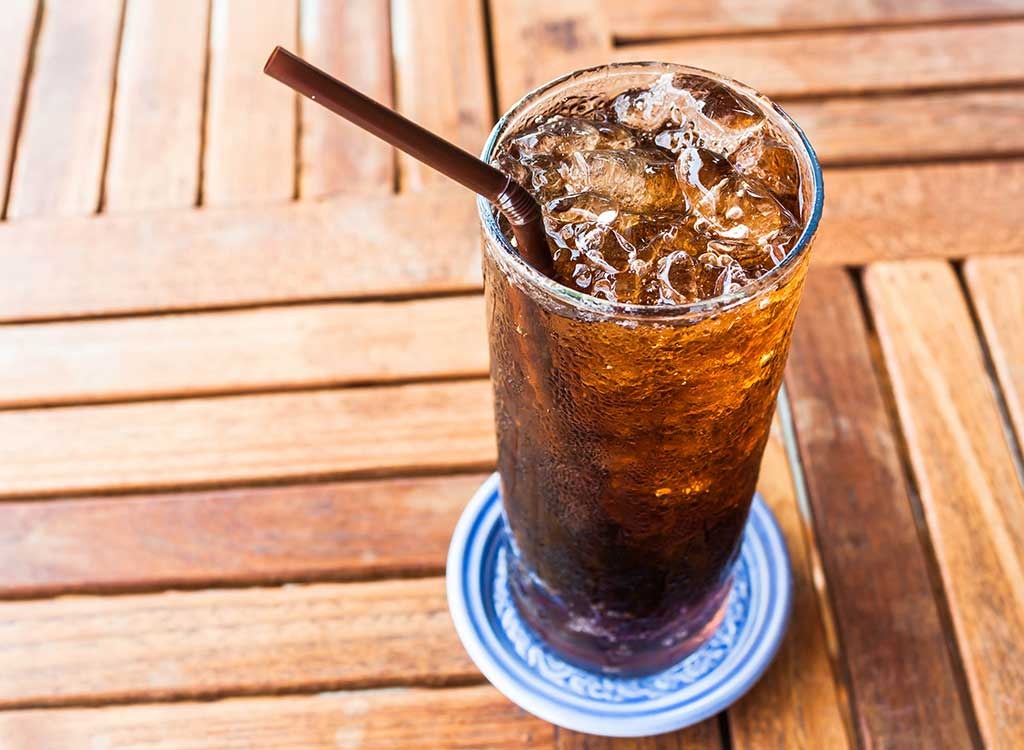

Choosing soda over H2O is a bad decision, but exactly makes the caramel-colored soft drink so bad for you? Sugary drinks like soda has toxic chemicals. A 2014 study from Consumer Reports and Johns Hopkins Center for a Livable Future showed that the chemical 4-methylimidazole (4-MEI) could increase your risk of developing cancer. Check out these other disturbing facts about soda.


The artificial food dyes you see in many baked goods, candies and other processed foods could cause serious side effects to your health. Despite being approved by the Food and Drug Administration (FDA), these dyes may contain cancer-causing contaminants. If you want to add a pop of color in your food, go for natural sources, like beet juice, green cold-pressed juices, or paprika.


It might have sounded like a good idea to double fist two Jack and Cokes in your 20s, but in your 30s and beyond, it’s important to keep alcohol intake to a minimum. The CDC recommends men limit their daily alcohol consumption to two drinks daily. If you’re out with co-workers to enjoy a post-work happy hour, cut your tab off after your first order. This is a mindful reminder that you’ve already had one drink.


If you’re over 40 and trying to lose weight, the last thing you want to do is guzzle down some OJ at breakfast. Fructose, which is the main sugar in fruit juice, has been linked to abdominal fat. Belly fat has been linked to heart disease, diabetes, and other metabolic diseases. Want to kick your sugar cravings? Get a copy of The 14-Day No Sugar Diet—it’s filled with healthy swaps, dining out guides, recipes, and much more!
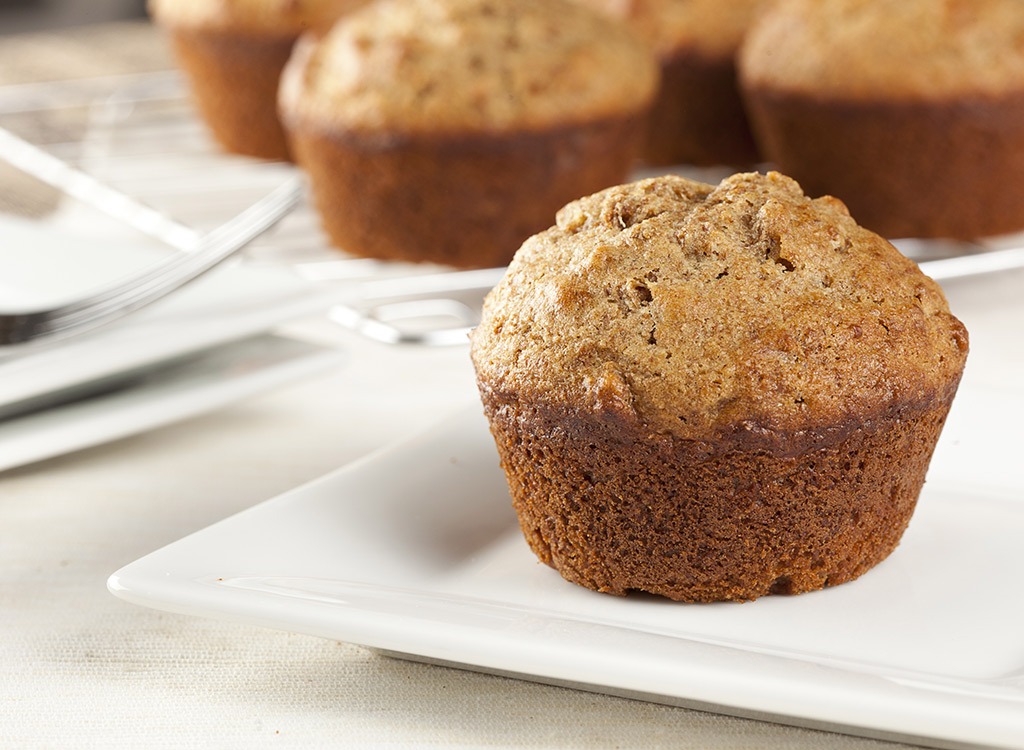

There’s no harm in treating yourself once in a while, but once you hit your 40s, you want to actively avoid eating sweets often. Packaged muffins could easily contain a full day’s worth of added sugar and fat. And they’re not the only sweet treat you should ditch…


Yes, the same goes for cupcakes. Having too much of the sweet stuff in your diet could also literally age you. Developing acne around the chin area and having premature wrinkles are both signs that you might be eating too much sugar.
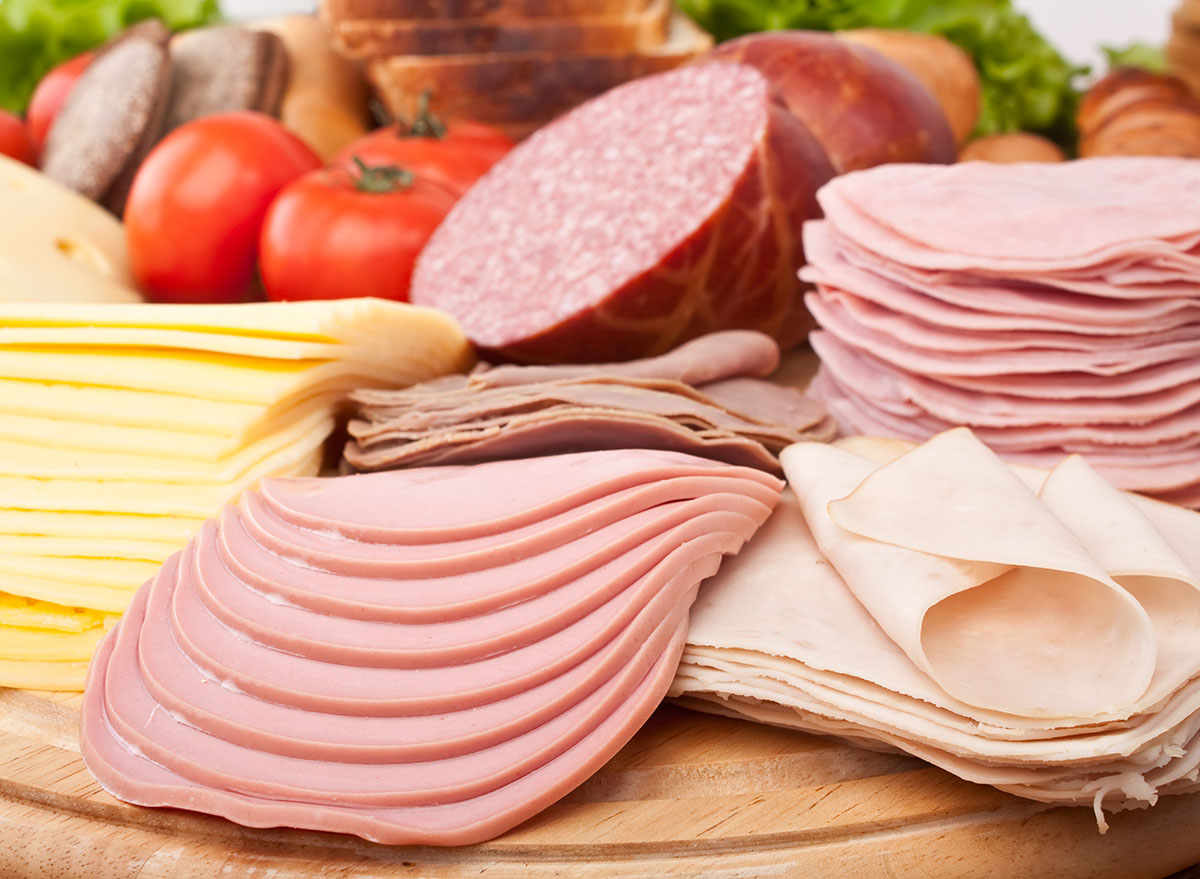

We hate to break it to you, but the deli meat in your sandwiches might not be all that it seems. A closer look at the ingredients label reveals sky-high levels of belly-bloating sodium, nitrate preservatives, modified corn starch, and carrageenan. So the next time you’re craving a sub, be sure to consult our list of the best and worst deli meats and enjoy uncured meats sparingly.
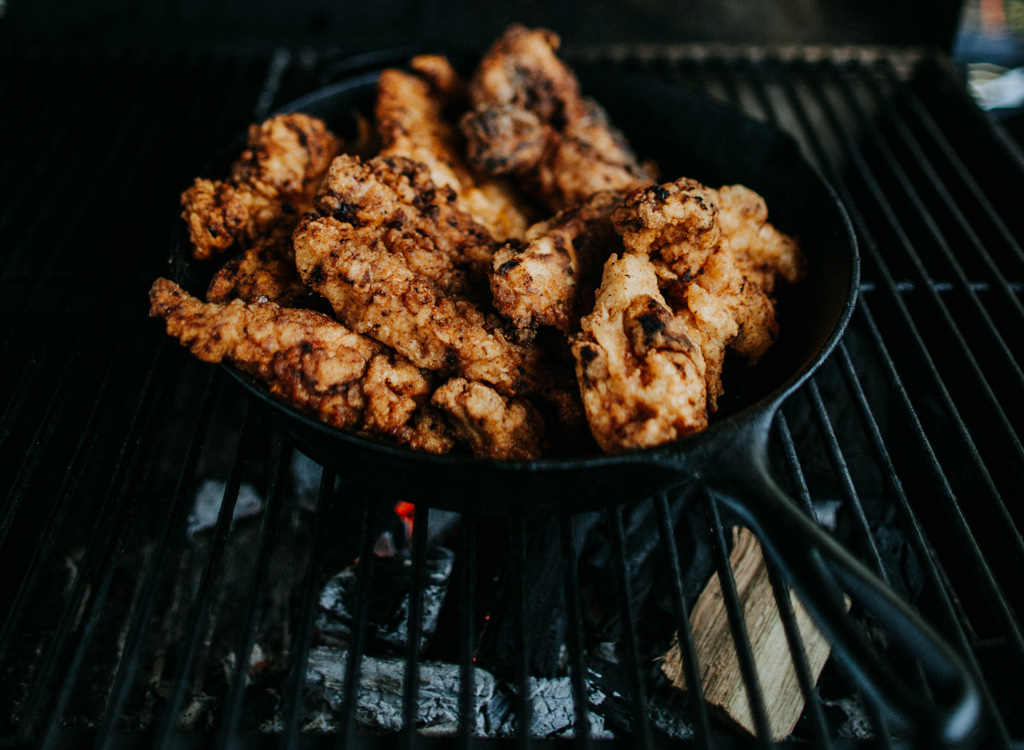

Grilling is one of the quickest and easiest ways to prepare your dishes, but if you’re concerned about your health, you want to keep barbecues to a minimum. Scorching steaks and other proteins at high temps over an open flame can produce heterocyclic amines (HCAs) and polycyclic aromatic hydrocarbons (PAHs). These chemicals have been found to alter the DNA and increase your risk of cancer.
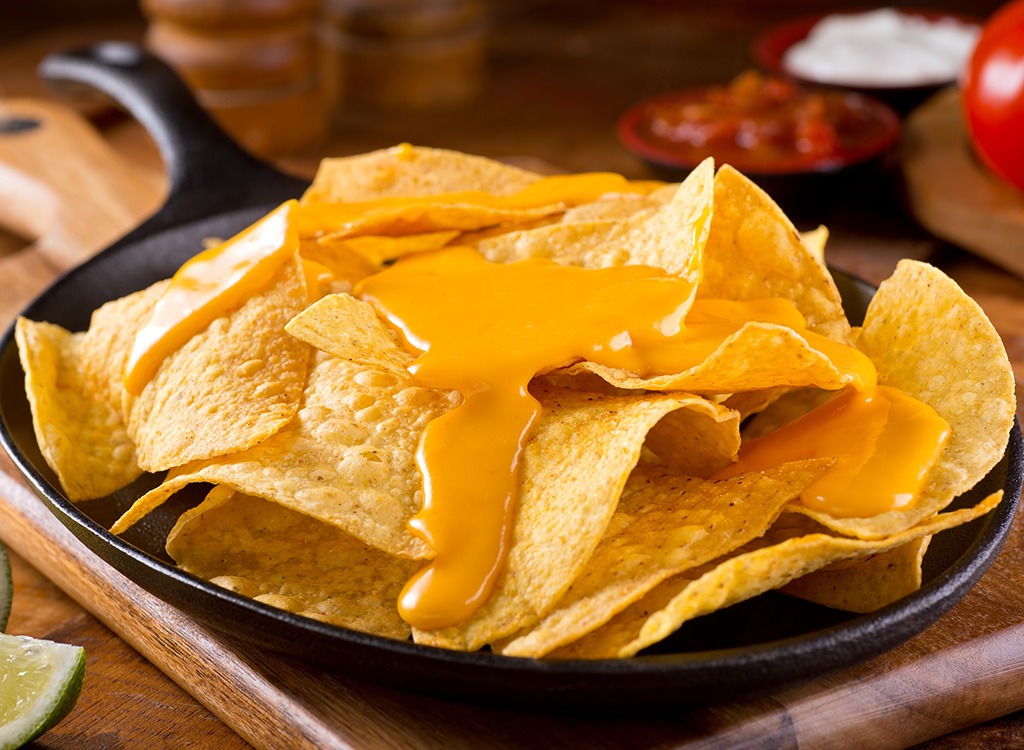

Cheese dips for nachos are littered with artificial colors and flavorings, in addition to food additives. Make your own dip at home with real cheese and your choice of spices and herbs for a boost of flavor.


The high levels of sodium and sugar in dishes like General Tso’s and chicken lo mein are a solid reason enough to stay away from Chinese takeout.
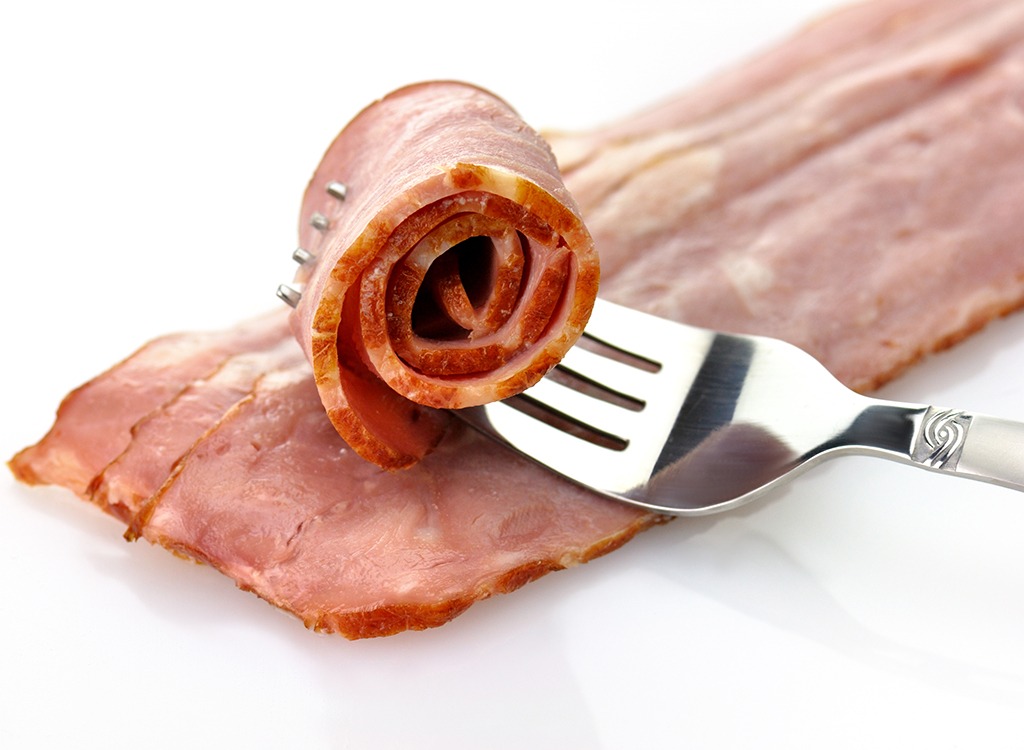

If you think you’re making the healthy choice by opting for turkey bacon, think again. Although turkey bacon has about 13 fewer calories per slice, it’s higher in saturated fat and sodium—not great news if you have high blood pressure.


Refined grains are stripped of fiber and other nutrients in order to render a soft, pillowy texture. However, refined and processed grains are also high-glycemic, which means that they cause your blood sugar levels to rise and fall quickly. Consuming too many of these refined foods can lead to metabolic diseases such as diabetes and obesity, so it’s best to ditch the white pasta and opt for whole wheat or bean-based pasta.
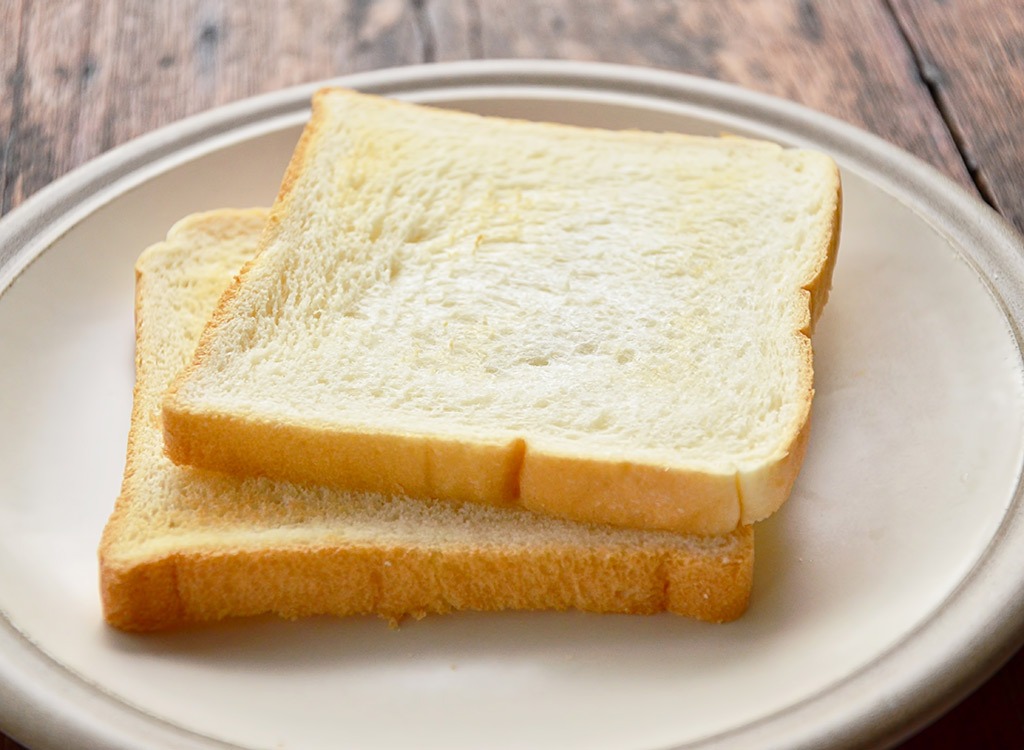

That means the same logic should be applied to white bread, too. To meet your daily intake of gut-healthy fiber and nourish your body with the nutrients it needs, skip the white slices and bagels and opt for whole-wheat or sprouted bread.
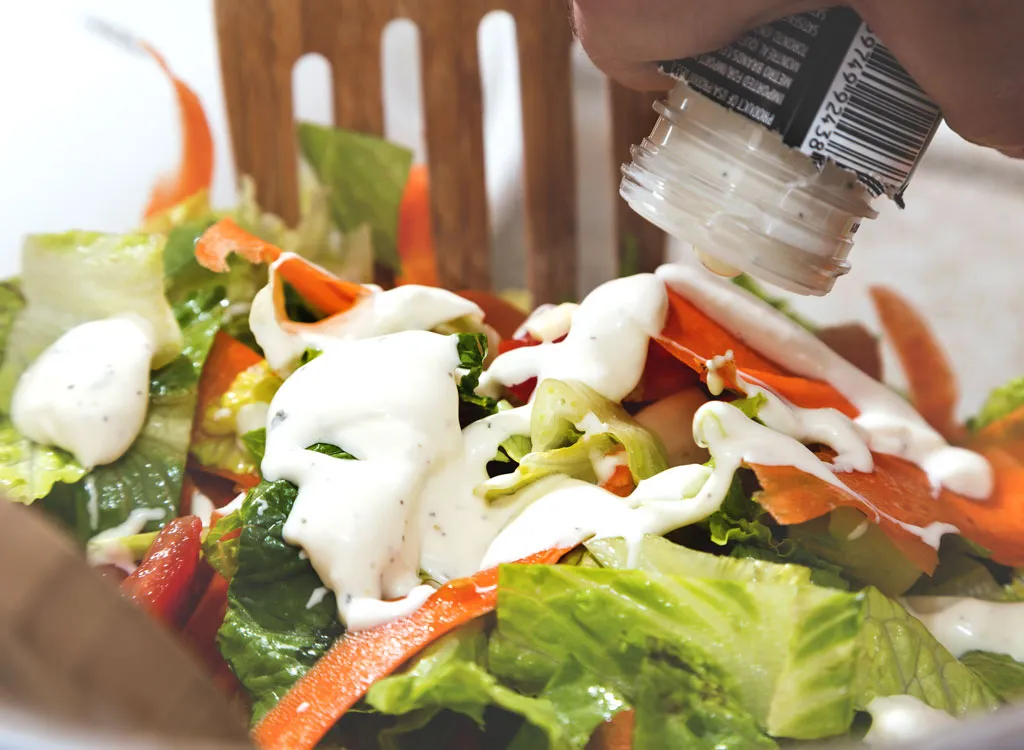

Low- or non-fat salad dressings make up for the absence of fat with a bucket of sugar, salt, and food additives. As a healthier alternative, prepare your own at home with these 8 Go-To Salad Dressings.
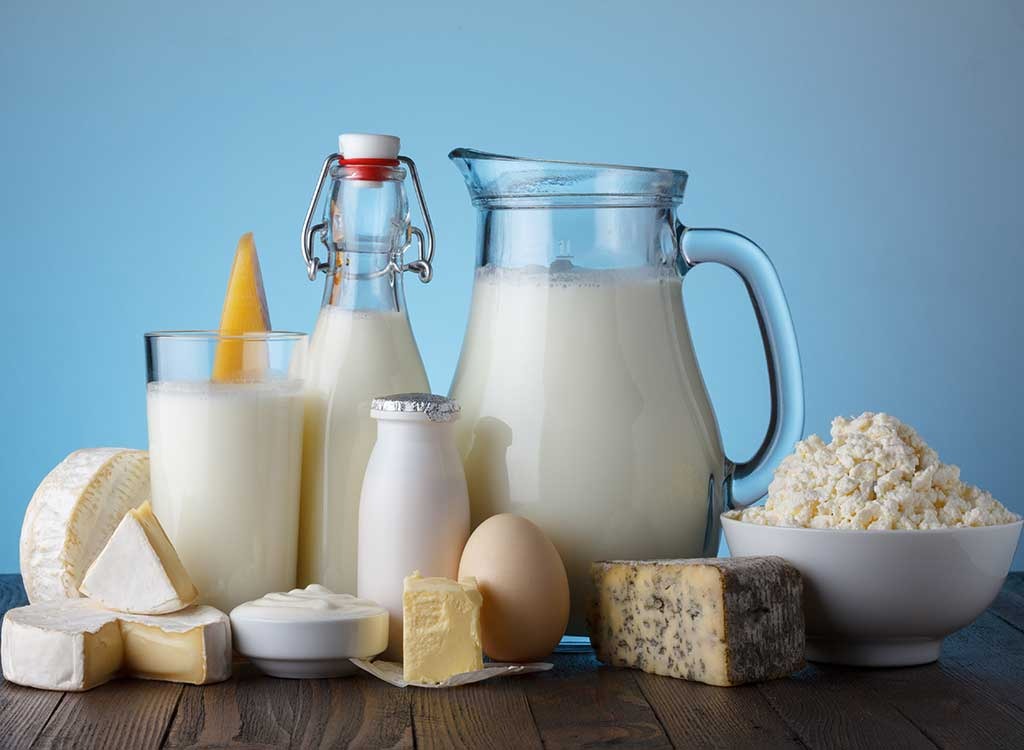

Fat-free dairy products such as cheese, cream cheese, and cottage cheese tend to be less satisfying than the real thing, which can spur on cravings for seconds or thirds. Plus, seemingly healthier low-fat foods pack in added sugar to make up for the lack of fat. Looking for the best full-fat foods? Check out these 20 Best Full-Fat Foods for Weight Loss!
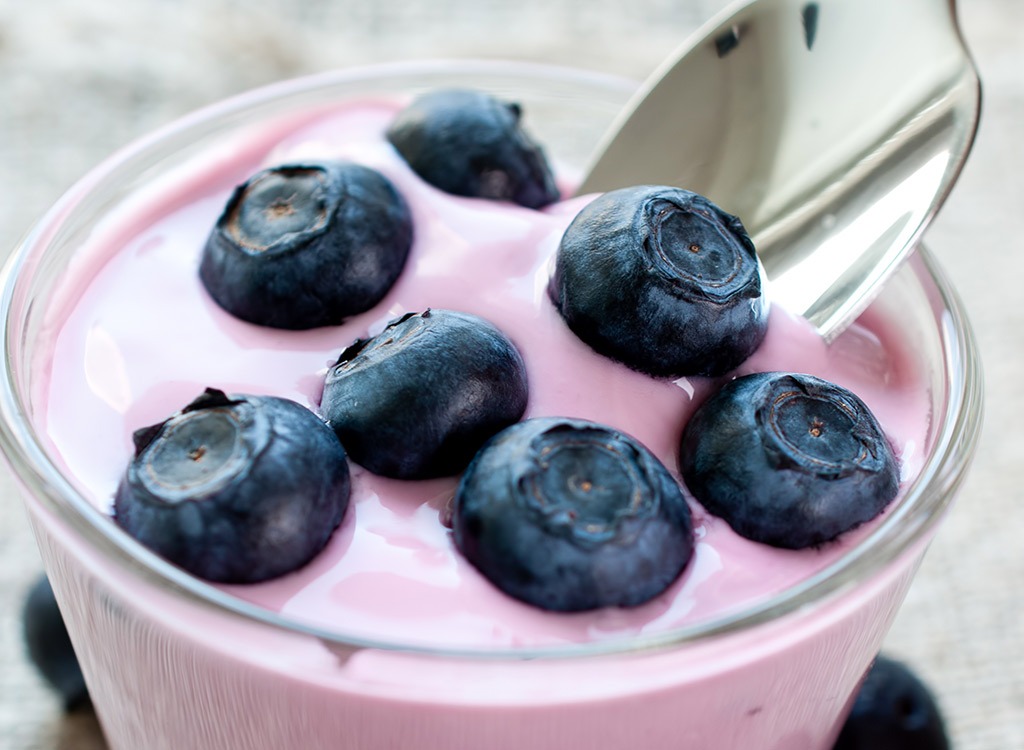

Unlike Greek yogurt, which is packed with satiating protein and is low in sugar, flavored yogurts are loaded with added sugars. If you’re want to add some flavor, fiber, and texture to your Greek yogurt, top it with some fiber-rich fruit, chia or hemp seeds, and nuts.
READ RELATED: COVID And Digestive Health: What You Should Know
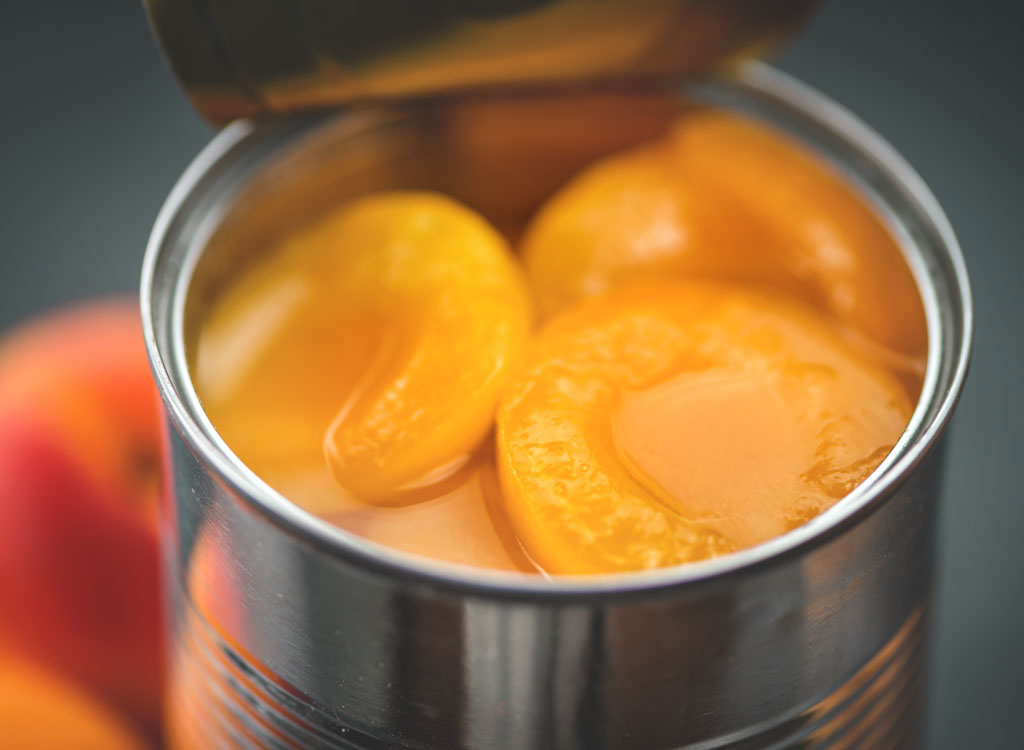

Canned fruit might seem like a great shortcut, but it’s just a quick route to belly fat. Packed with syrup, artificial flavorings, and other nasty additives, you’re basically opening a can of waist-widening worms. Even unsweetened varieties are missing the crucial fiber, and vitamin content might be degraded in the canning process.
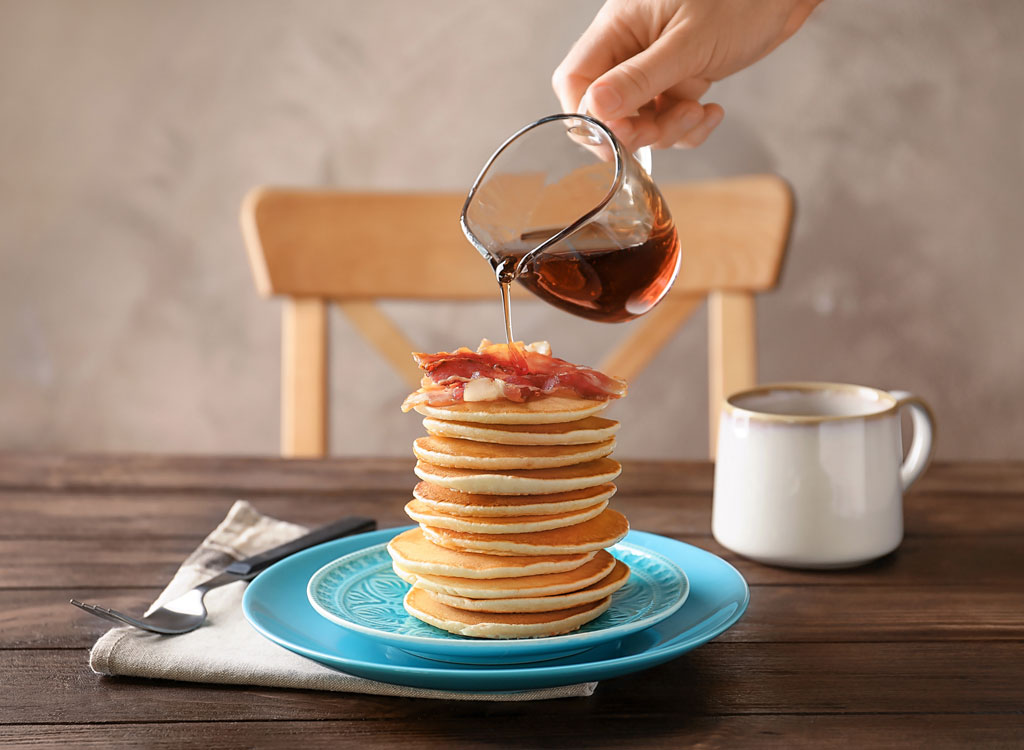

If you’re not careful, the syrup that you choose to drizzle your hotcakes with might spell trouble for your tummy. Maple-flavored syrups like Log Cabin’s and Aunt Jemima’s are made with high fructose corn syrup, a sugar that has been linked to metabolic syndrome and increased belly fat. Instead, stick to real maple syrup, which contains trace minerals. (Looking for more helpful tips? Your guide to the anti-inflammatory diet that heals your gut, slows the signs of aging, and helps you lose weight is here!)
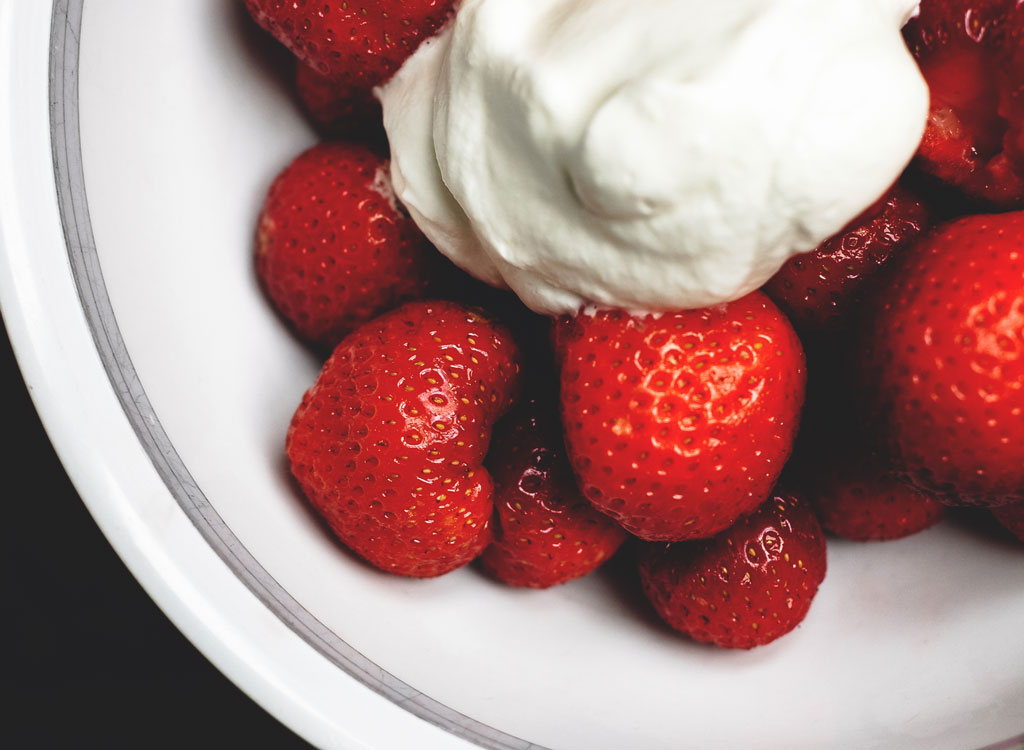

We’re looking at you, Cool Whip! Whipped topping doesn’t actually have any cream. Instead, you’ll find sketchy ingredients such as partially hydrogenated vegetable oil and high fructose corn syrup—two culprits your diet could definitely do without.


In a 15-year study consisting of 3,000 adults, it was found that those who ate fast food more than twice a week developed insulin resistance at twice the rate than those who didn’t consume fast food. Insulin resistance increases the risk of developing type 2 diabetes and prediabetes.
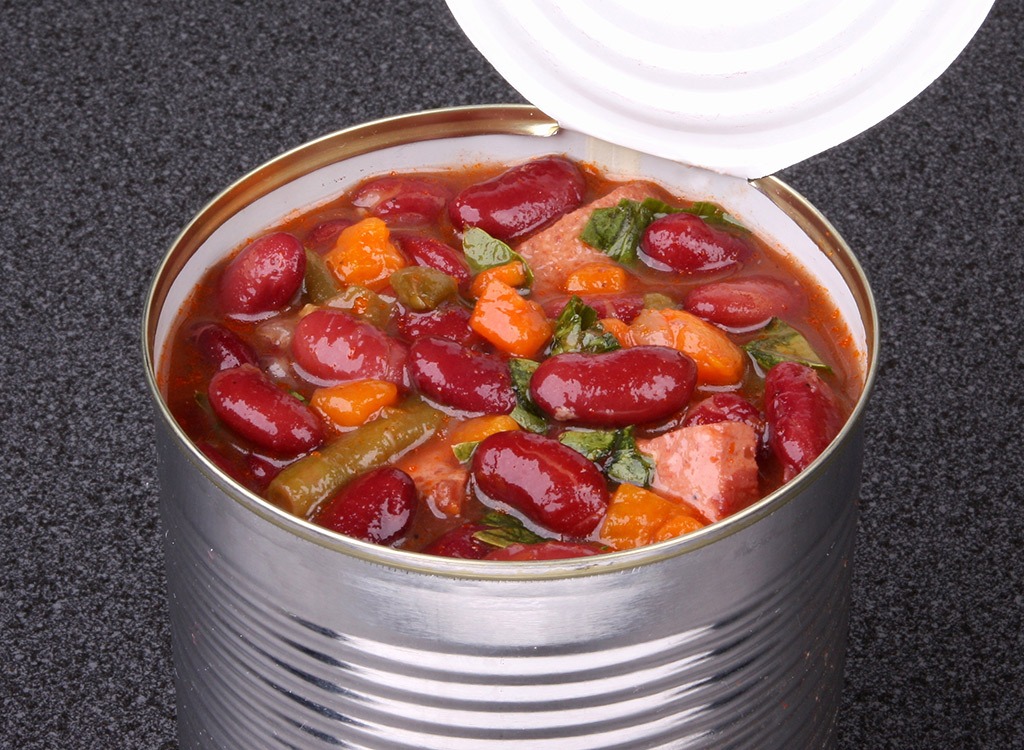

Many canned soups pack in a half day’s worth of sodium as well as additives such as appetite-spiking MSG. For a healthier alternative, meal prep your own soup at home with grass-fed bone broth and store leftovers for easy use. Bone broth is also chock-full-of collagen, which helps turn back the clock on our skin.
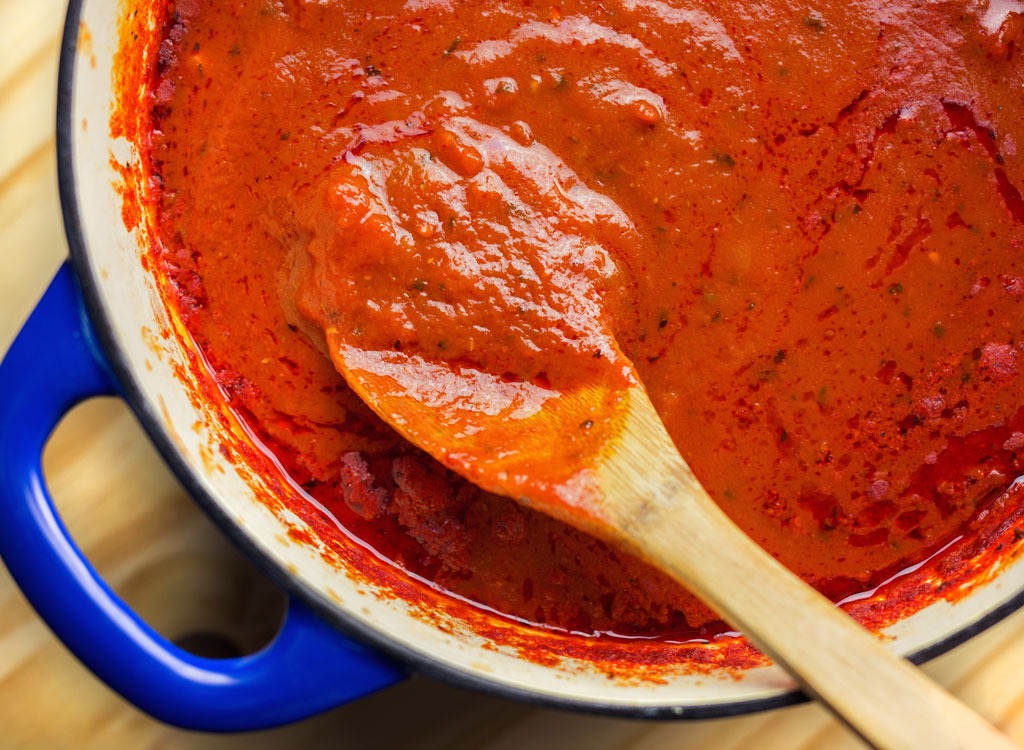

To clarify, we’re not saying that all pasta sauces are bad for you—just some. Processed pasta sauces may contain tomatoes or tomato paste as the first ingredient, but oftentimes, these sneaky saboteurs also contain loads of inflammatory oils, added sugar, and salt.
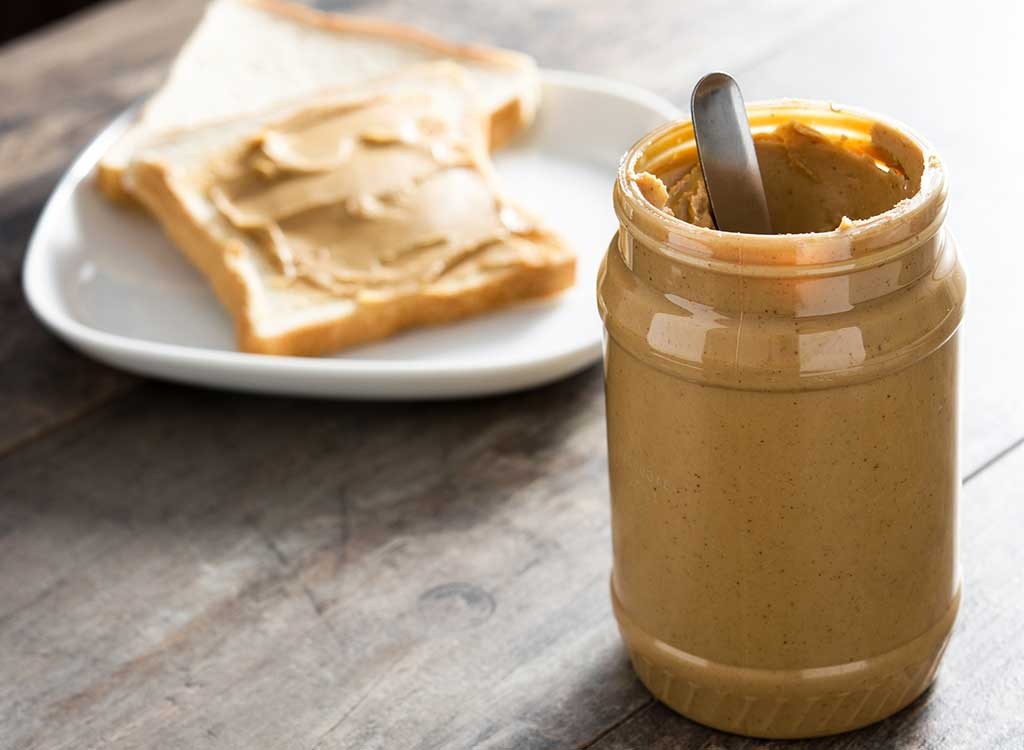

Many processed peanut butter have added sugars and hydrogenated and processed vegetable oils that can raise cholesterol levels. Shopping around for a jar? Check out our list of The 36 Top Peanut Butters—Ranked!
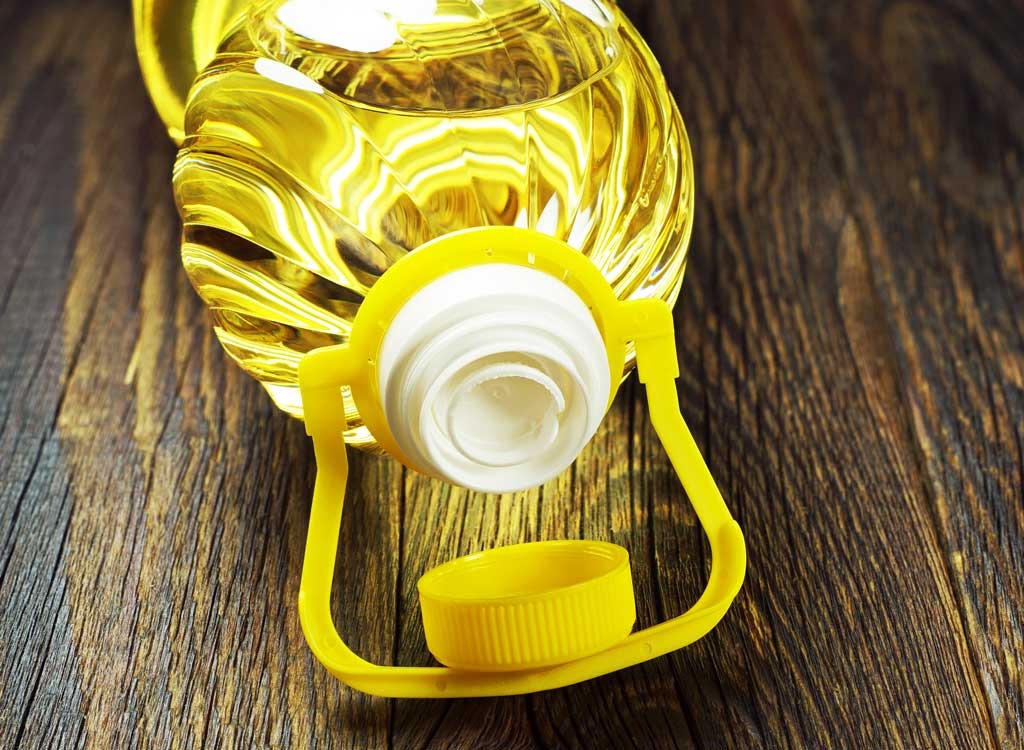

Soybean, corn, and cottonseed oil are highly processed and have high levels of essential omega-6 polyunsaturated fats. While omega-6 fatty acids can be good for your heart if they’re eaten in moderation, consuming too much of it can cause a negative imbalance with omega-3 fatty acids. To ensure you get both, swap in avocado or extra-virgin olive oil.
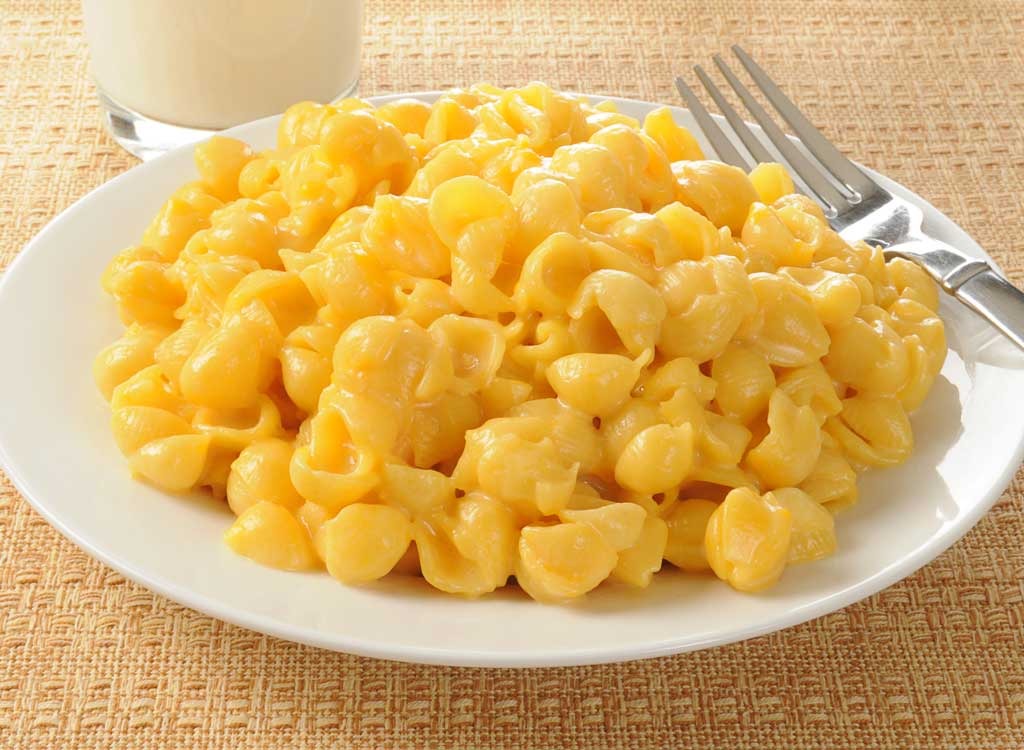

Mac and cheese was probably your favorite dish as a young kid, but that doesn’t mean you should continue to indulge. Many commercial boxes contain up to 30 percent of your daily recommended intake of sodium as well as blood-sugar-spiking empty carbs coming from the white shells.


Some cold java can boost your metabolism, but many bottled varieties can do just the opposite. Take Gold Peak’s salted caramel and almond toffee cold brew flavors. Both pack in 270 calories and a whopping 53 grams of sugar! Excess sugar can increase your risk of diabetes and wreak havoc on your hormones.
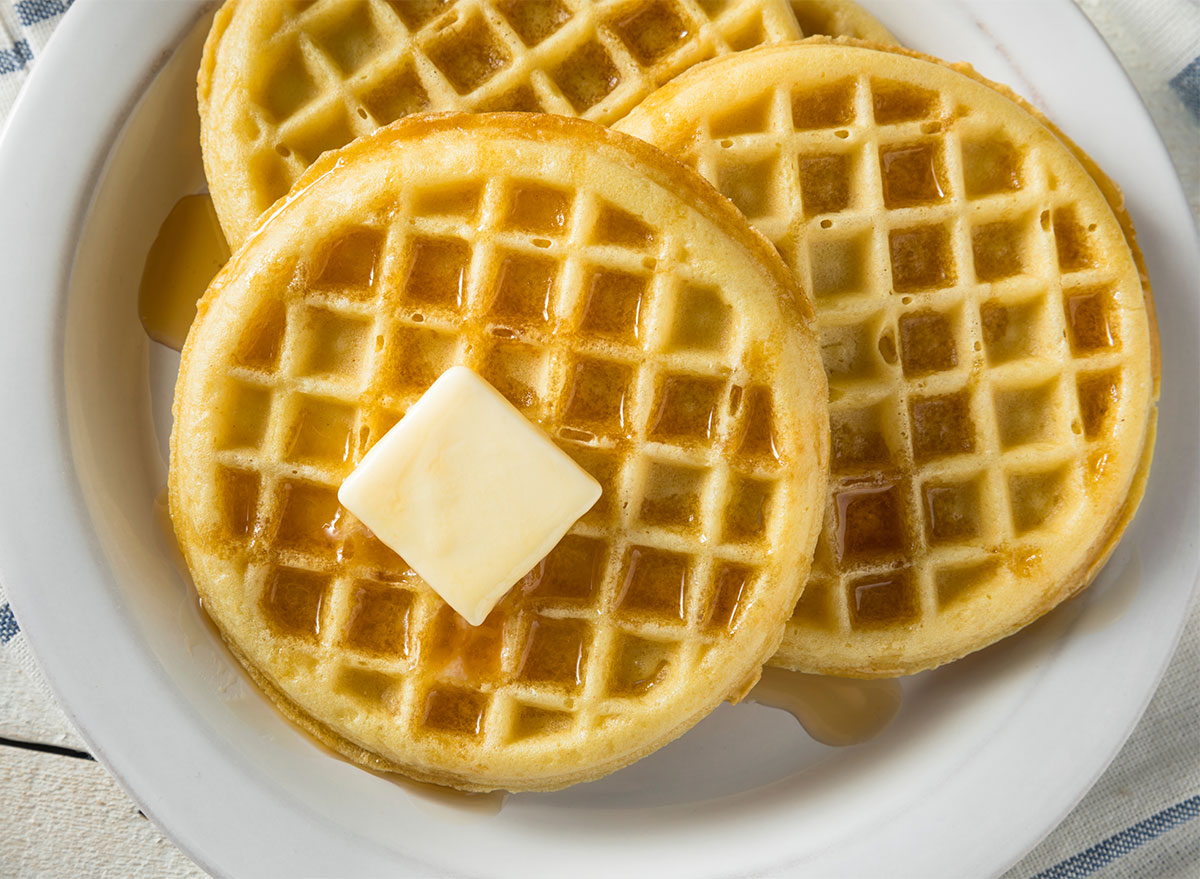

You may have enjoyed Eggos for breakfast as a child, but there’s no reason for you to enjoy some for your a.m. meal when you’re over 40. They barely contain any gut-loving fiber or muscle-maintaining protein to keep you full.
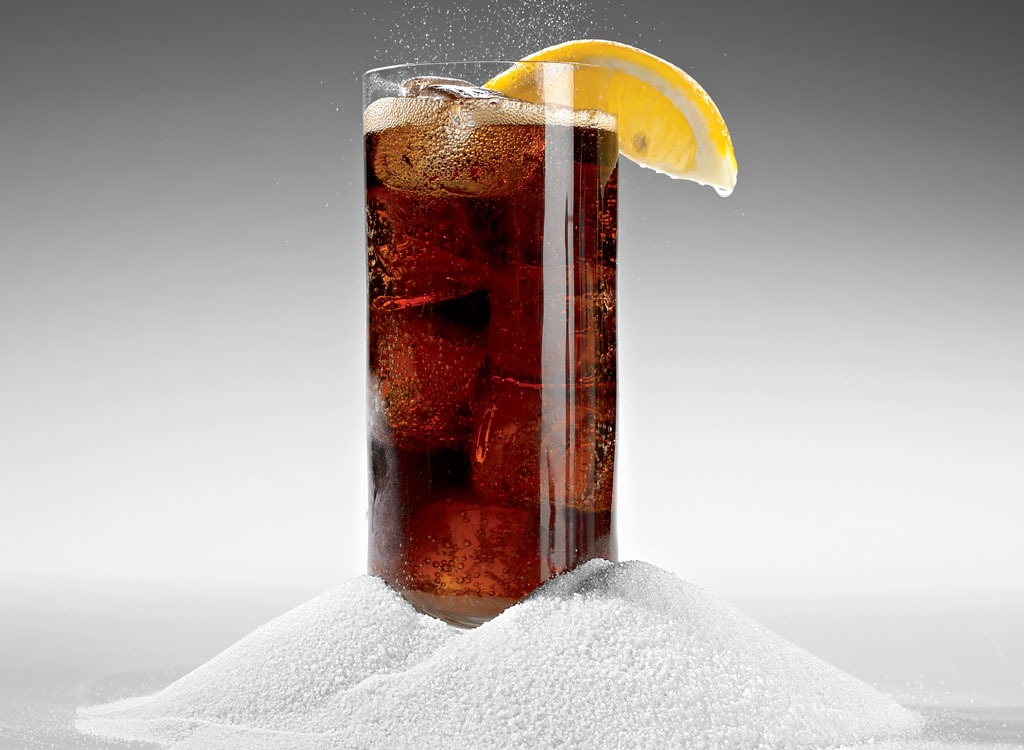

Zero-calorie artificial sweeteners found in sugar-free drinks such as Diet Coke and Diet Pepsi can leave you craving more of the sweet stuff. Artificial sweeteners are 200 to 600 times sweeter than real sugar, so it can signal an insulin release from the pancreas.


This might be a treat from your childhood but now that you’ve reached 40, it’s time to skip ordering one of these when you’re dining out. Restaurant milkshakes are often as caloric as an entire entree, as they are not longer just made up of milk and ice cream.
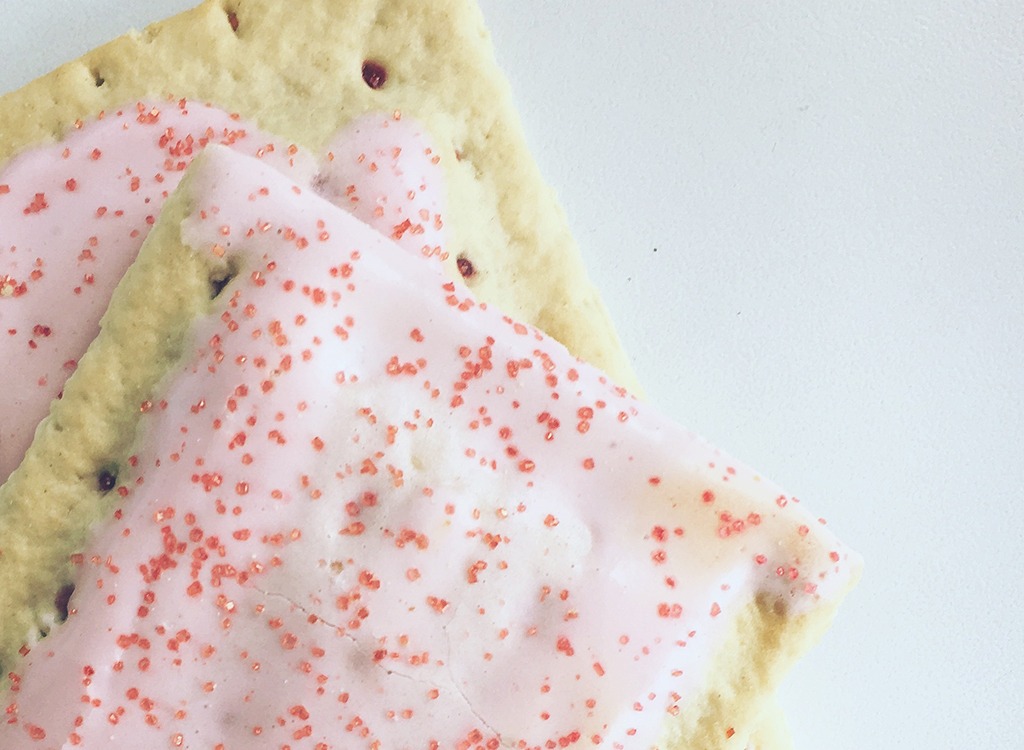

This is another quick and easy breakfast choice from your schooldays that you should steer clear of. One package comes with two pastries, which will cost you 30 grams of added sugar if you go for the strawberry-frosted flavor, and that’s just at the start of your day. Research has found that consuming too much added sugar increases the risk of dying with heart disease.
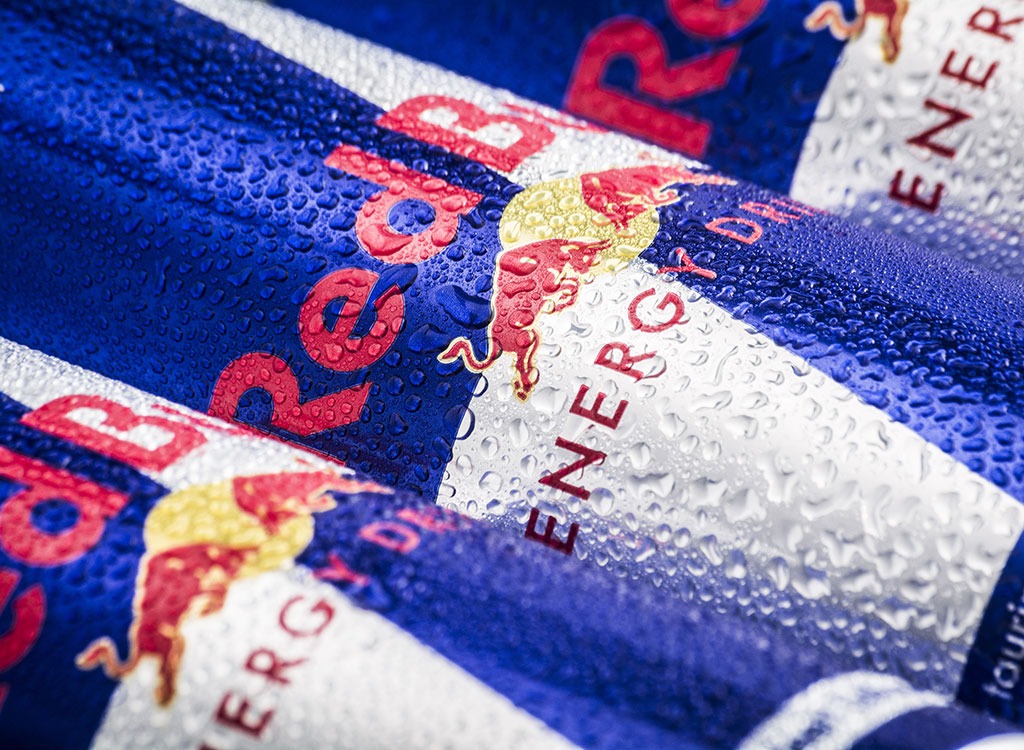

You might get a sudden surge of energy from these canned drinks, but they’re laced with tons of with harmful sweeteners that are worse for your teeth than the ones found in soda. These drinks simply aren’t worth it and with a healthy diet, you’ll get the right amount of energy you need, naturally.
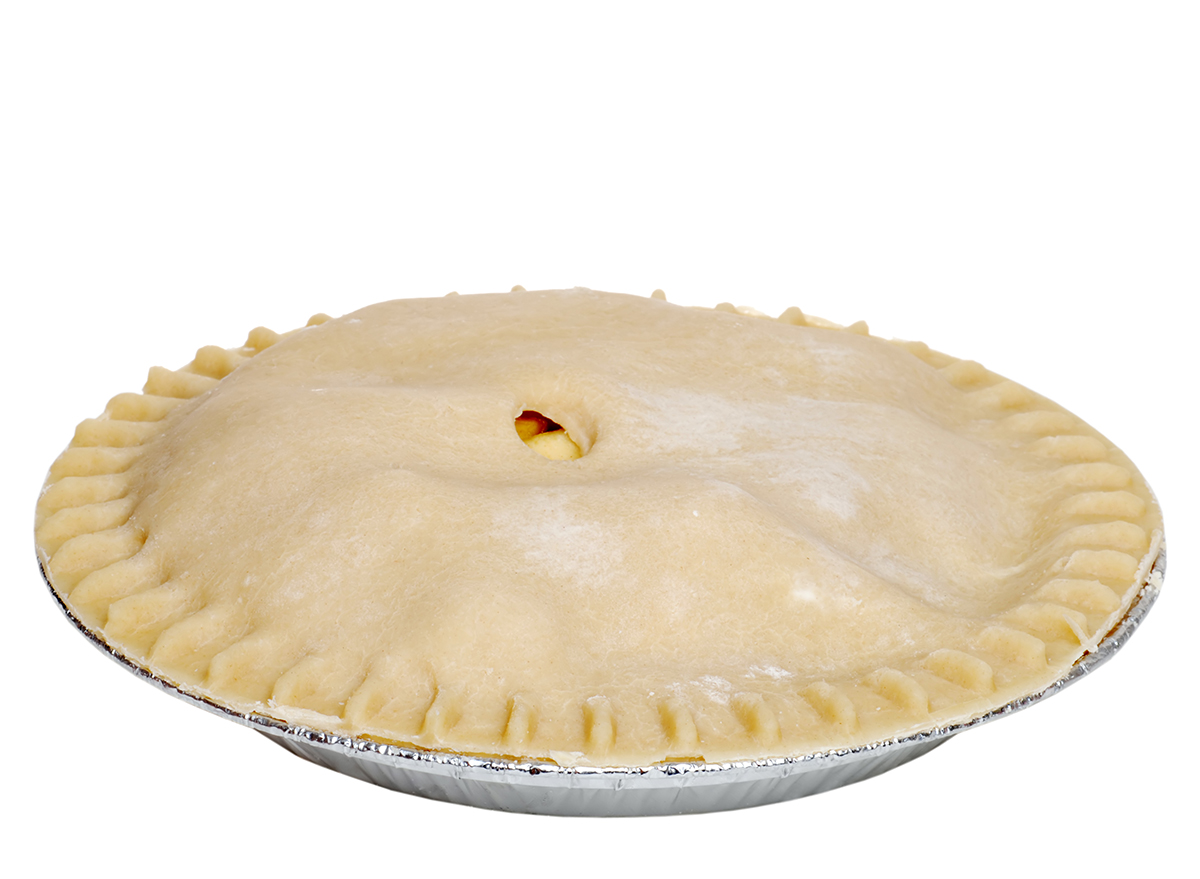

A frozen apple pie seems harmless, but this dessert option is one you should simply say no to. Take Marie Callender’s apple for example—it’s packed with hydrogenated oils, so one slice has a whopping three grams of trans fats. Trans fats can increase your risk of cardiovascular disease, and a slice of premade pie just isn’t worth damaging your heart health.
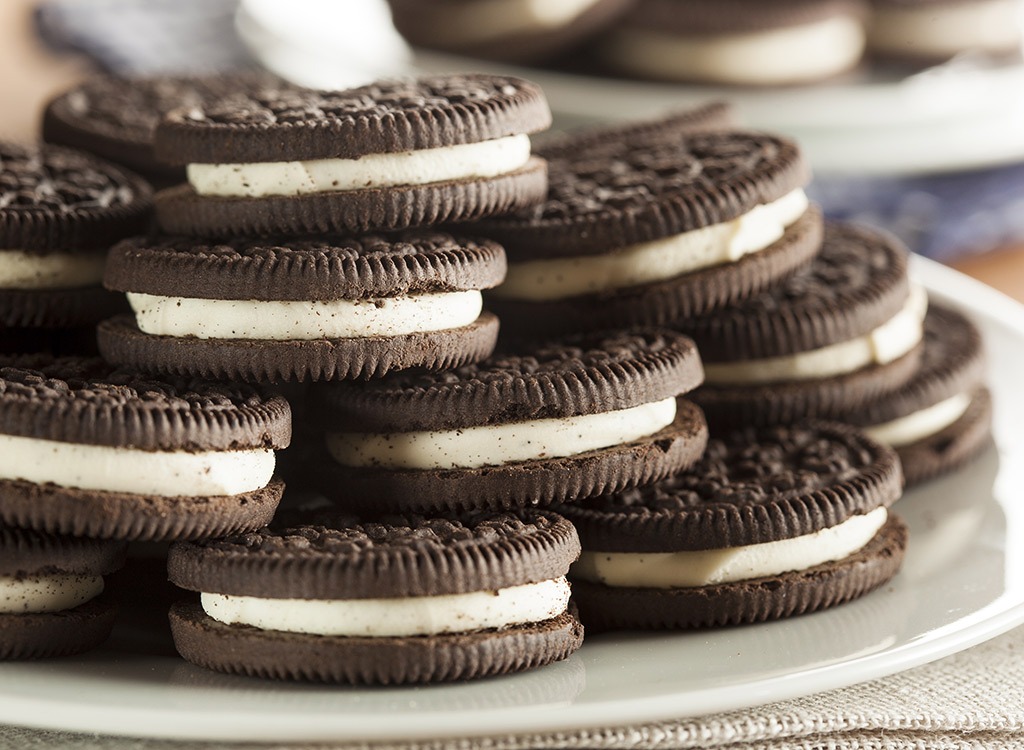

Oreo cookies are another sweet treat you might’ve ate regularly as a kid but now, it’s time to leave these processed cookies in the jar. They’re filled with empty calories and will contribute to your waistline expanding. You can never eat just one, and as you get older, it’s no secret that shedding pounds doesn’t happen as easily, so try staying away from this snack.
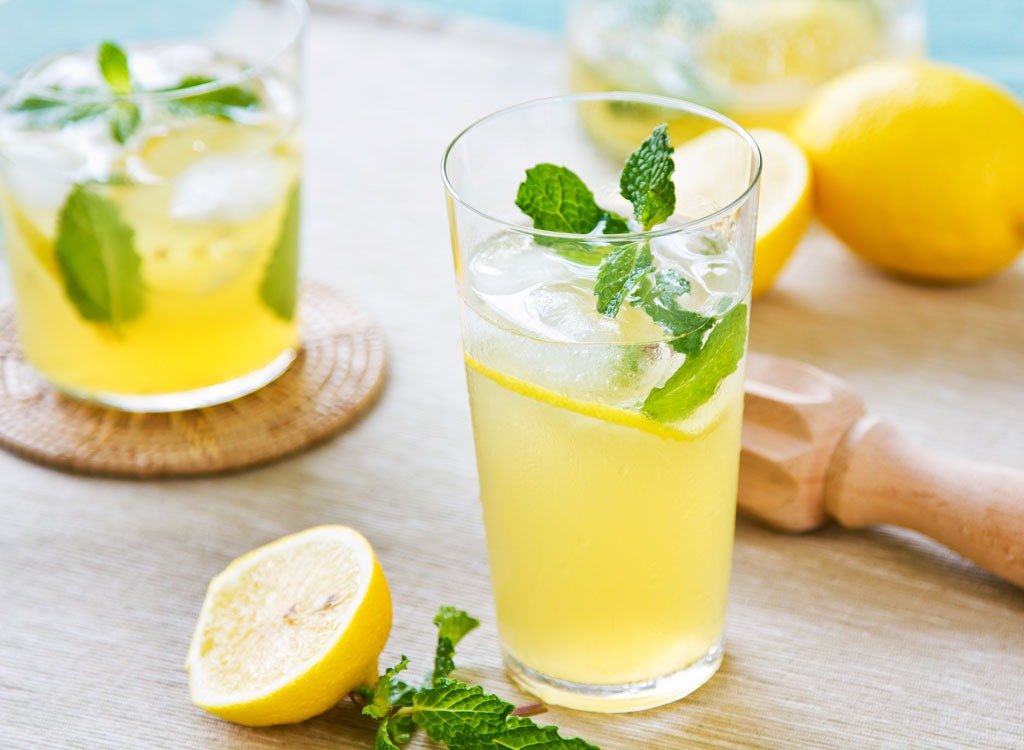

Lemonade might seem like a drink choice that is innocent enough, but it’s often high in calories and sugar in just one cup. Minute Maid, for example, has a whopping 40 grams of sugar in just one 12-ounce can. You don’t need to be sipping on this now that you’re 40!
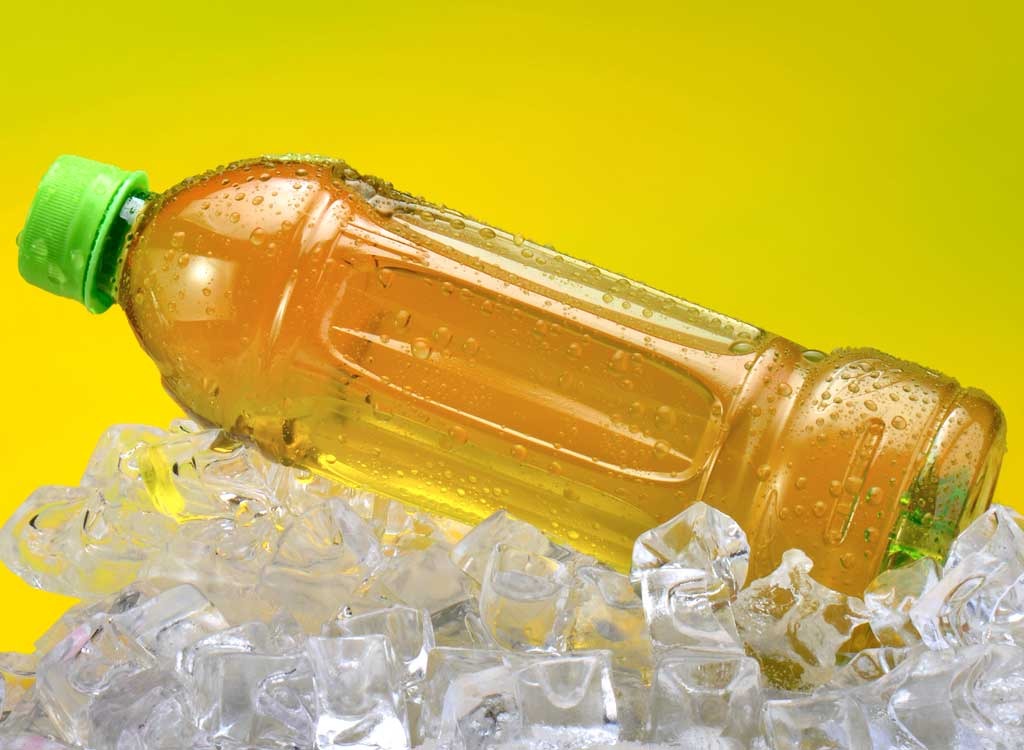

No, we’re not talking about the pure form of tea that is actually good for you. A study actually found that you would have to drink 20 bottles of store-bought tea to get the same amount of antioxidants that are in just one home-brewed cup. Store-bought bottled teas not only are packed with sugar, but a lot of these drinks get their hue from caramel color instead of actual tea.
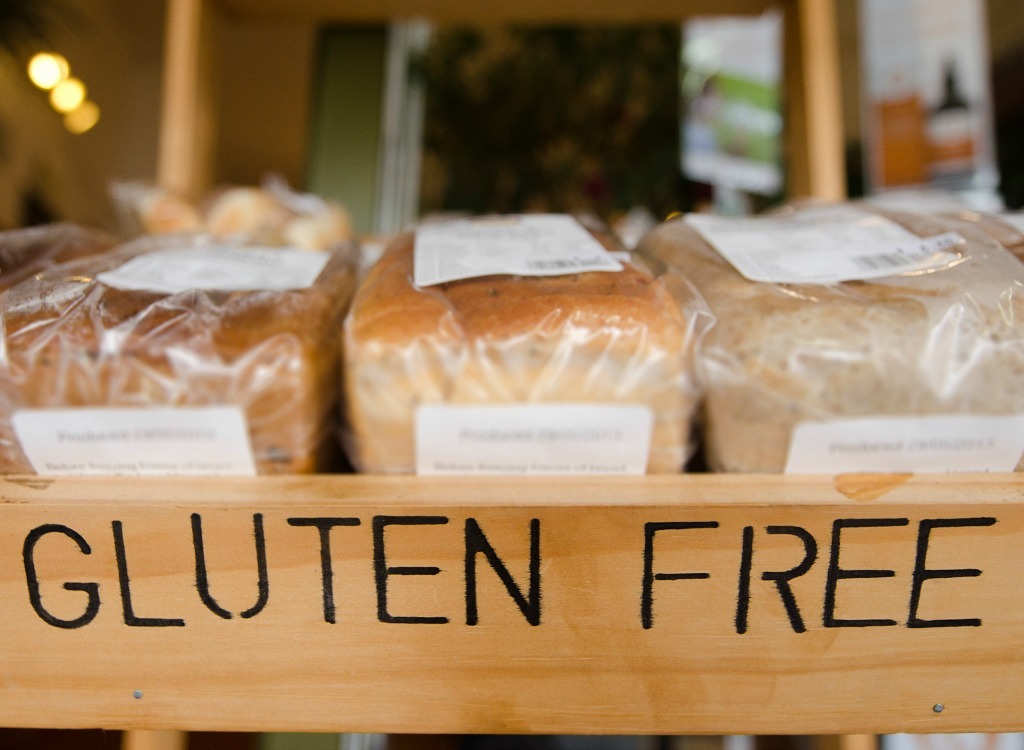

Unless you have a gluten sensitivity or have celiac disease, there’s no reason for you to eliminate wheat products from your diet. Many whole-grains contain waist-whittling fiber that helps level blood sugar, keeps you regular, and supports good bacteria in the gut.


Unlike wild-caught, farmed fish contains higher levels of inflammatory omega-6 fatty acids. To keep your omega-3 and omega-6 levels balanced, opt for wild over farmed to gain anti-inflammatory and other healthful benefits.
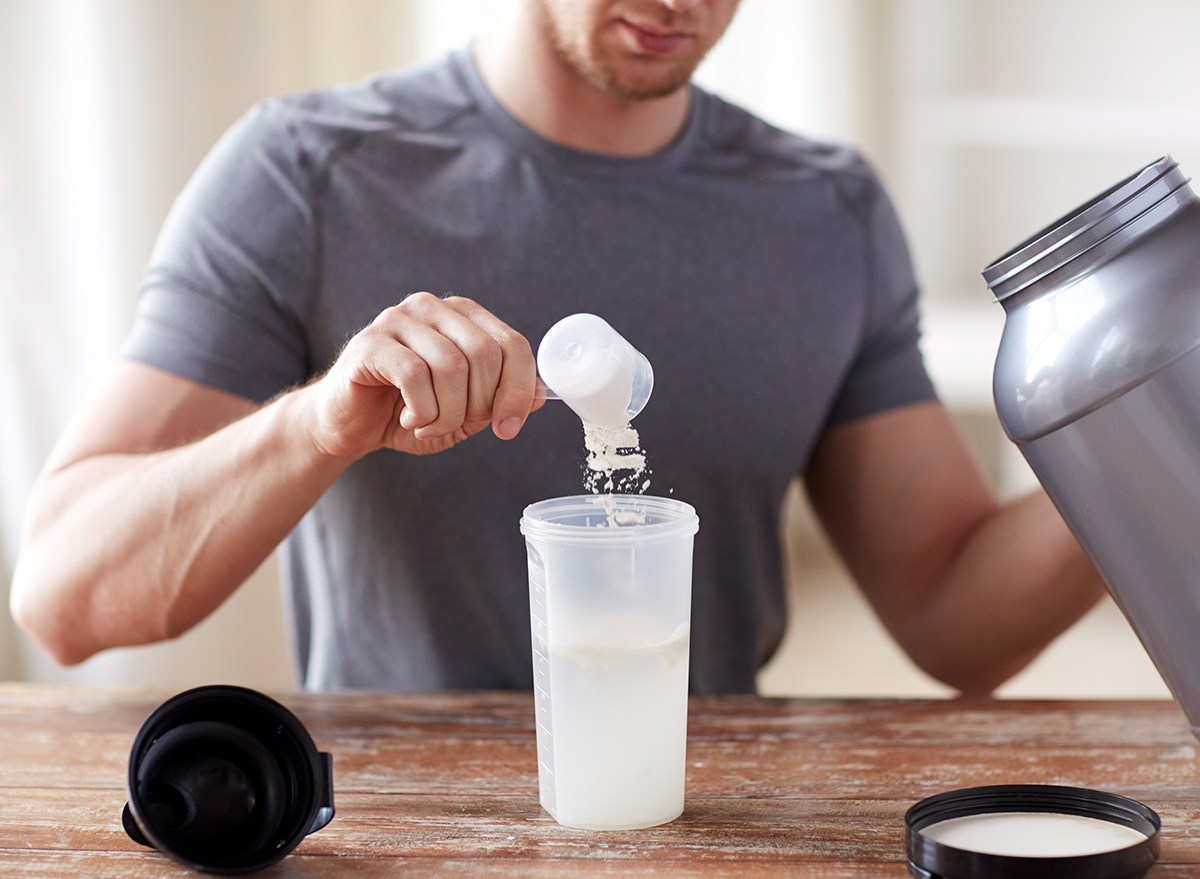

Many store-bought bottles are littered with artificial additives, added sugar, hydrogenated oils, preservatives, and more calories than you’d typically eat in a meal. In other words, this combo is a recipe for weight gain.
Source:








